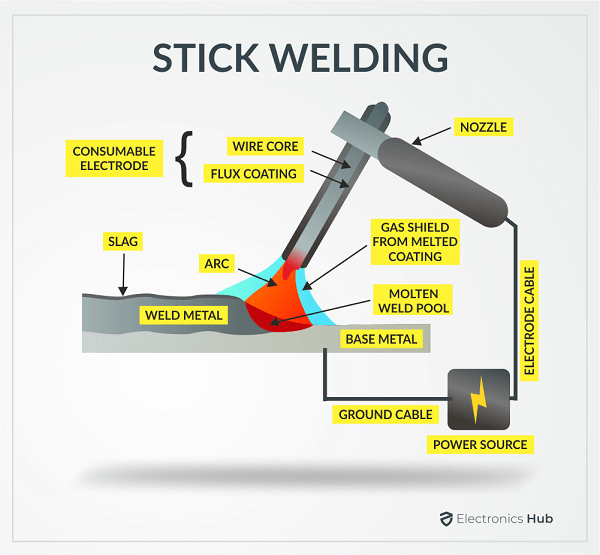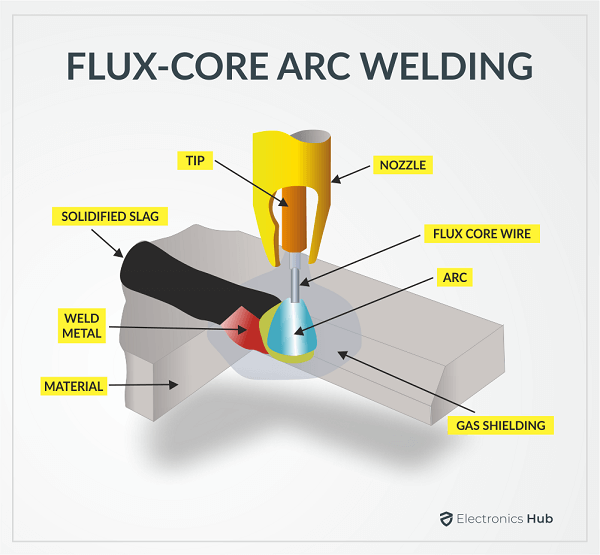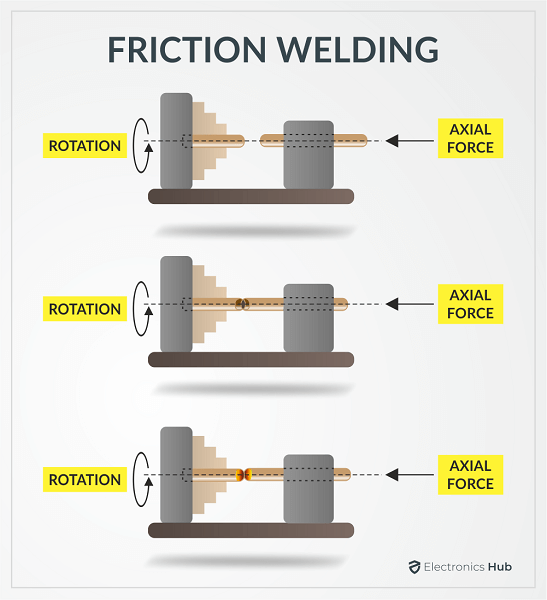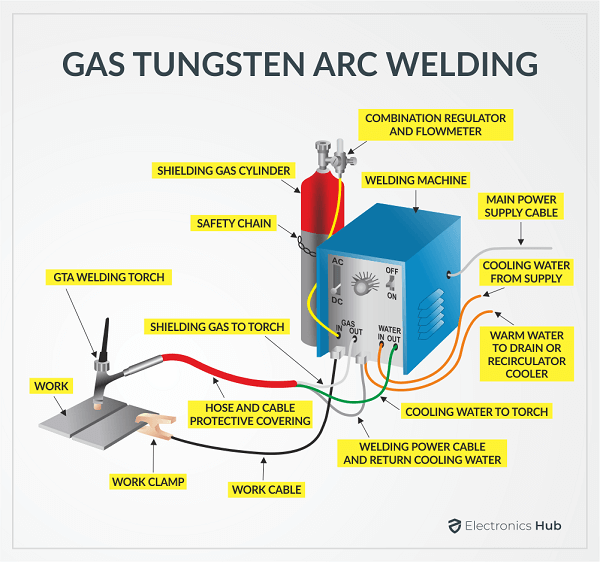Underwater welding was invented in 1930 for constructing and repairing marine structures, bridges, dams, and seacrafts. Besides, underwater welding is extremely popular among projects related to pipelines, ships, and oil rigs. Even nuclear power plants involve certain underwater welding tasks. In this article, we will explain everything you need to know about underwater welding.
What Is Underwater Welding?
Underwater welding refers to the process of welding performed in a wet environment. Underwater welding is done at elevated pressure though it is similar to the traditional way of welding. Generally, underwater welders are first trained to be professional welders and then trained to be professional divers. Underwater welding is dangerous, but if proper precautions are followed, it is going to be regular work. A few years of training from experienced instructors and trainers, along with work experience, will make you a professional underwater welder.
Risks And Rewards
When you are working under water, there is a chance of electrocution as salt water is a good conductor of electricity. Therefore, you need to avoid bringing wet surfaces and the source of electricity. In short, there is life risk involved if the workers are not careful and follow safety standards strictly. Since the risk is quite high, the reward is equally high. Underwater welding happens to be one of the highest paid occupations. That is why the employment rate is increasing in underwater welding profession. The average annual wage happens to be around $60,000. The top ten percent of underwater welders get over $1,50,000 annually. You do not need a college degree to become a professional underwater welder.
What Are The Types Of Underwater Welding?
There are two main types of underwater welding, and they are dry welding and wet welding.
1. Dry Welding
It may come as a surprise to many but underwater welding can be done in dry conditions. In dry welding, the procedure is done inside a hyperbaric chamber. In such a chamber, there is a dry atmosphere having certain gases. Welding in a hyperbaric chamber happens to be more reliable and durable. But hyperbaric chambers are expensive, and hence, it is not always affordable for all projects. That is why wet underwater welding is more common.
2. Wet Welding
Wet welding is traditional underwater welding. This means the welding will be done in wet conditions and preferably under the water. Depending on the budget and the urgency of welding requirements, wet welding is the most preferred choice. The accessibility of the repairing spots also makes wet welding a suitable choice. The risk involved is higher, and the quality of welding is not as great as dry welding. The quality issue is due to the fact that the welding area cools down quickly due to the surrounding conditions. Naturally, there can be cracks and defects.
What Is The Procedure Of Underwater Welding?
There are different processes available for performing underwater welding. Choosing the process depends on the type of welding required, skills of the welder, and the budget of the welding. Here are the different processes of underwater welding.
Wet Welding
1. Stick Welding
It is the most common process of wet welding because it is cost-effective and it has versatile applications. An electric arc is created between the consumable electrode and the structure to be welded using power supply. The filler material melts and deposits on the joint or repairing area.The surfaces must be clean for the process to be of high quality. Before performing the process, the welders ensure safety guidelines. A layer of gaseous bubbles is created for the entire process to operate, and hence, no one gets electrocuted. Bubbles can be a hindrance in visibility but that is where the skills and experience of the welder come into the scene. Instead of alternating current, direct current is used.
2. Flux-Core Arc Welding
When you want to deposit metal alloys as the filler material on the joint, flux-core arc welding is the best method. This is because the electrode will have filler material with flux for better welding work. The electrode comes in the form of wires for accurate deposition.
3. Friction Welding
In this method, instead of melting the filler material, it undergoes heat and friction for deposition on the joint. This involves a lot of manual work in wet conditions in comparison to flux-core arc and stick welding.
Dry Welding
1. Habitat Welding
In this process, welding is conducted in a small chamber called habitat. The environment is safe, and it reduces the chances of inflammation due to gases. The method is widely popular in oil rig where the environment is breathable. Since the pressure inside the chamber is higher than outside, the gases flow outside.
2. Pressure Welding
In this process, workpieces are joined under high pressure. Pressure welding involves several different processes, but the high-pressure environment stays the same in all sub-processes. The different processes are solid-state welding, explosive welding, friction welding, gas pressure welding, and ultrasonic welding. Out of these, friction welding is the most common and cost-effective. The welding will be of decent quality. In the process, a rotating tool is used to create friction, and under force, the welding of the joint sections is done.
3. Dry Chamber Welding
In this process, a small chamber is used where the welder must enter so that the upper body is inside the chamber. The chamber creates a dry atmosphere and the welder uses consumable electrodes in the chamber. The flux-cored arc welding is used for welding different workpieces.
4. Gas Tungsten Arc Welding
This is an extremely popular and effective welding process. It uses a tungsten electrode, and it works under high temperatures. The process involves an electric arc, and a filler material is used as a wire. The molten metal is deposited on the workpieces, and the metal works well when alloy is used. However, the welder needs to be highly skilled. The process is referred to as TIG, and another process is equally popular called gas metal arc welding or MIG. MIG involves a welding gun to deposit filler. A shielding gas is used for better deposition. MIG is easier than TIG for any welder.
5. Plasma Arc Welding
This process is similar to TIG. It uses an electric arc between the electrode and workpiece. The difference lies in the fact that the electrode is placed inside the torch body in plasma arc welding while it stays outside in gas tungsten arc welding. The process is also applicable to wet welding where a hyperbaric chamber is used for shielding and safety purposes. The chamber contains breathable gases, and the diver needs to enter the chamber for welding process.
What Are The Dangers Associated With Underwater Welding?
We have already stated that underwater welding is quite risky. But there are several such professions available where the risk is equally high as the reward. The risk is very high if you compare underwater welding to traditional dry welding. Here are the dangers in the operation of underwater welding that you should be aware of. Drowning – There is a high chance of drowning if any gear fails when the diver is so deep underwater. A backup gear is essential for such an extraordinary situation. Combustion – There are certain flammable gases involved in underwater welding such as oxygen. Due to any mishandling and mistake, the explosion can be life-threatening. Proper ventilation is a must to avoid such scenarios. Electrocution – The biggest danger in underwater welding is electrocution as the operation involves large amount of electricity. All gears need to be waterproof. Apart from these, due to high pressure environment, damage to the lung is common if the diver is overworking. Another common health issue is called diver’s disease due to the consumption of gases can be fatal.
Conclusion:
Underwater welding is quite common though it sounds something impossible. It is a well-paid professional work where risks are equally rewarding. We have explained all the different types and methods of underwater welding. Moreover, we have stated the dangers of underwater welding that you should be aware. Comment * Name * Email * Website
Δ









![]()